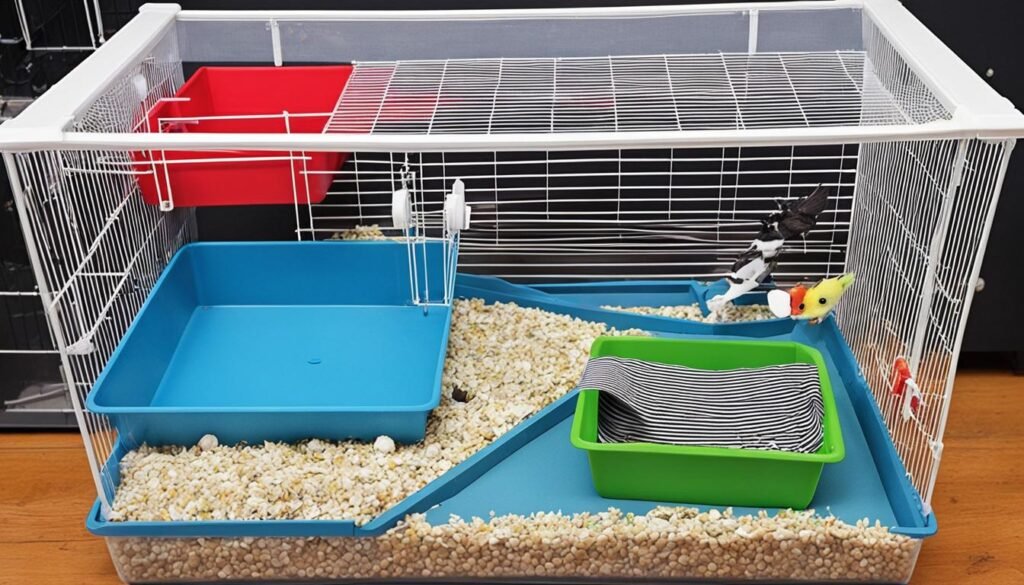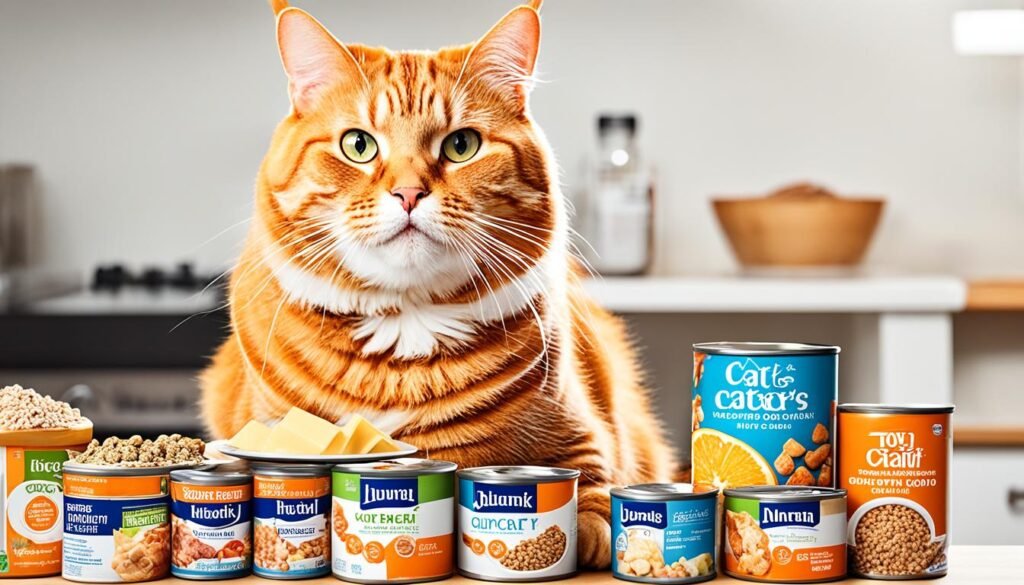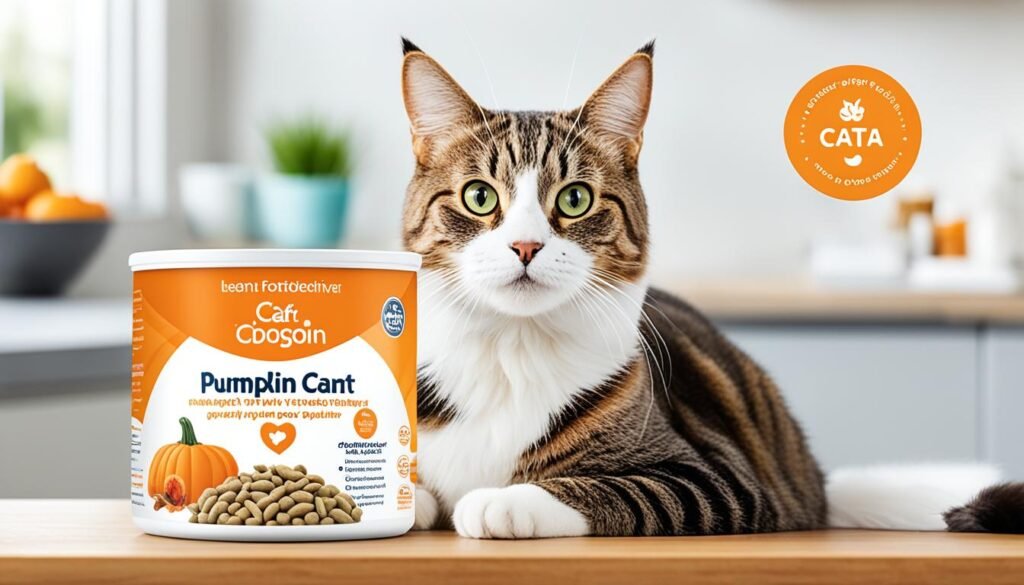Creating an optimal habitat for your ball python starts with selecting the right bedding. But with so many options available, how do you know which is best? Is there an ideal substrate that promotes your snake’s well-being and ensures a comfortable living environment?
In this article, we will explore the top choices for ball python substrates and recommend options rated highly by experienced snake keepers. From premium substrates to quality bedding, we will help you make the best decision for your ball python’s enclosure.
The Importance of Choosing the Right Substrate
Your choice of substrate can significantly impact your ball python’s overall well-being and quality of life. It is vital to provide a comfortable, natural environment that resembles its native habitat. Different substrates offer various benefits and suitability depending on your snake’s needs.
When selecting a substrate for your ball python, consider the following factors:
Comfort and Security:
Opt for a substrate that offers your ball python a soft, secure surface to rest and move. The right substrate should not cause discomfort or harm to your snake’s delicate skin.
Moisture Control:
Ensure that the chosen substrate helps maintain proper humidity levels within the enclosure. Ball pythons require a specific moisture level to support healthy shedding and respiratory function.
Hygiene and Cleanliness:
Choose a substrate that is easy to clean and replace when necessary. Regular cleaning and proper substrate maintenance are crucial for preventing bacterial growth and maintaining a hygienic environment for your snake.
Natural Habitat Replication:
Consider substrates that closely mimic the natural environment of a ball python. Options like cypress mulch, orchid bark, or bioactive substrates can provide a more authentic and enriching habitat for your snake.
You can ensure comfort, health, and overall happiness by carefully selecting the best substrate for your ball python. The right substrate choice will create a safe and thriving environment for your beloved pet.
Good Substrates for Ball Pythons
Choosing the right substrate is essential when providing a safe and comfortable habitat for your ball python. Several good options are recommended for ball pythons, each offering unique benefits and suitability for your snake’s needs. Let’s take a closer look at some of the top choices:
Newspaper
Newspaper is popular for ball python substrates due to its affordability and ease of use. It provides a clean, hygienic surface for your snake to move around while allowing easy cleanup. To maintain cleanliness, soiled newspapers should be replaced with fresh layers regularly.
Paper Towels
Similar to newspapers, paper towels are another cost-effective and easily accessible substrate option. They offer excellent absorbency and are convenient for spot cleaning. This substrate choice is particularly useful for hatchlings or snakes recovering from illness or injury.
Commercial Paper Cage Liners
Commercial paper cage liners are a great choice if you prefer a more durable and reusable option. These liners are designed for reptile enclosures and provide a sturdy and hygienic surface for your ball python. They are easy to clean; wipe or replace them as needed.
Recycled Paper Beddings
For an eco-friendly option, recycled paper bedding is an excellent choice. These beddings are made from recycled paper materials and are non-toxic, dust-free, and highly absorbent. They create a soft and comfortable substrate for your snake while maintaining a clean and odor-free environment.
Cypress Mulch
Cypress mulch is a natural substrate that provides a visually appealing look to your snake’s enclosure and helps maintain moisture levels. It holds humidity well and is resistant to mold and mites. This makes it an ideal choice for ball pythons that require higher humidity levels.
Orchid Bark
Orchid bark is another natural option that provides excellent moisture retention. It helps create a humid microclimate within the enclosure, which benefits ball pythons. Orchid bark is long-lasting, easy to spot and clean, and provides an attractive natural aesthetic.
Bioactive Substrates
Consider bioactive substrates if you want to create a more natural and bioactive setup for your ball python. These substrates combine soil, leaf litter, and beneficial microorganisms to create a self-sustaining ecosystem within the enclosure. The microorganisms help break down waste and maintain a healthy environment for your snake.
Aspen Shavings
Aspen shavings are a popular choice for many snake keepers due to their affordability and ease of use. They provide a soft, comfortable bedding option for natural burrowing behaviors. Aspen shavings are also low in dust and easy to clean, making them a practical choice for ball pythons.
Remember to consider the specific needs of your ball python when selecting a substrate. Factors such as humidity requirements, natural habitat replication, and ease of cleaning should be considered. By choosing one of these good substrates, you can provide your ball python with a safe and suitable bedding option for a happy and healthy life.
Bad Substrates to Avoid
When choosing a substrate for your ball python, it’s important to be aware of potential risks to its health and well-being. While many suitable options are available, some, such as sand, are not recommended. If ingested, sand can cause serious health issues and lead to intestinal blockages.
Cedar Shavings: Cedar shavings should also be avoided as a bedding choice for ball pythons. The oils and chemicals in cedar can be harmful and cause respiratory problems in snakes.
Astroturf: Astroturf or other artificial turf materials are unsuitable for ball python enclosures. They can be difficult to clean and may harbor bacteria or parasites.
Gravel: Gravel is another substrate that ball pythons should avoid. If ingested, it can injure the snake’s delicate scales or mouth.
Choosing safe and appropriate substrates is crucial for the health and well-being of your ball python. Stick to options that promote a comfortable and natural environment without posing any harm.
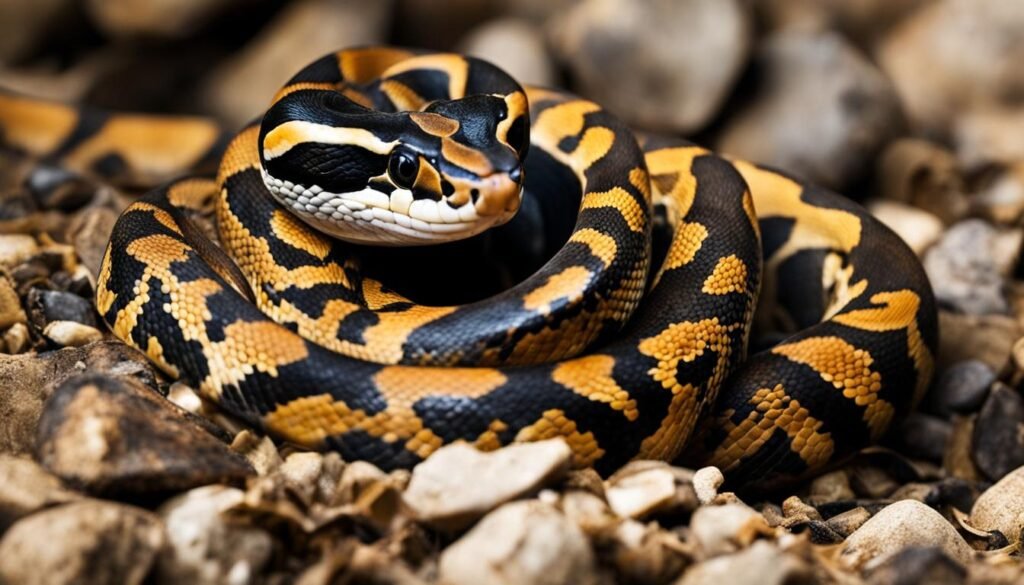
Substrate Safety Tips
While some substrates may seem harmless, they can still pose risks. Always research and consult with experienced reptile keepers or veterinarians to ensure the safety and suitability of your chosen substrate.
Safe Substrates for Ball Pythons
Choosing the right substrate is essential when creating a safe and comfortable environment for your ball python. You want bedding options that promote hygiene, moisture control, and overall well-being for your snake. Fortunately, several substrates are considered safe and suitable for ball pythons.
One popular choice is newspaper, which provides a clean and easily replaceable surface for your snake’s enclosure. Paper towels are another hygienic option that allows for easy cleanup. If you prefer a commercial solution, cage liners made from recycled paper offer comfort and convenience.
Cypress mulch and orchid bark are excellent choices for a more natural aesthetic. These substrates retain moisture and mimic the forest floor, creating a comfortable and familiar habitat for your ball python. Bioactive substrates, consisting of a blend of soil, coconut fiber, and microorganisms, offer a self-sustaining environment that helps maintain optimal humidity levels.
If you prefer a simpler option, aspen shavings can provide clean and comfortable bedding for your snake. They are low-dust and non-toxic, making them a safe choice for ball pythons.
While these substrates are generally considered safe, monitoring your snake’s behavior and overall health is crucial when introducing a new one. Every ball python is unique; some individuals may have specific sensitivities or allergies to certain materials. Watch for discomfort or respiratory issues, and adjust as needed.
By selecting a safe substrate for your ball python, you’ll create a habitat that promotes its well-being and allows it to thrive. Remember to clean and maintain the substrate regularly to ensure a hygienic environment for your snake. You can provide a comfortable and healthy home for your ball python with the right bedding options.
Bedding Maintenance Tips
Properly maintaining your ball python’s substrate is essential for their health and well-being. Regular cleaning and removing contaminated substrates are necessary to prevent infections and other illnesses. Here are some crucial tips for maintaining substrate hygiene:
Cleaning and Spot Cleaning
Regular Cleaning: Clean the entire enclosure and replace the substrate as needed. The frequency of substrate replacement depends on the type of substrate used and the cleanliness of the enclosure. Generally, it is recommended that the substrate be replaced every 2-4 weeks.
Spot Cleaning: Remove feces, urates, shed skin, or excess water from the substrate as soon as possible. This helps maintain a clean and hygienic environment for your ball python.
Hygiene Practices
Wash Your Hands: Always wash your hands thoroughly with soap and water before handling or cleaning the substrate. This minimizes the risk of transferring potential pathogens or contaminants to your snake.
Disinfecting Tools: When cleaning the enclosure or performing spot cleaning, use separate tools dedicated solely to your snake’s habitat. Disinfect these tools regularly to prevent cross-contamination.
Monitoring and Adjusting
Check for Mold or Foul Odors: Regularly inspect the substrate for any signs of mold growth or unpleasant odors. If you notice any, remove the affected substrate immediately.
By following these tips, you can ensure the cleanliness and hygiene of your ball python’s substrate, providing them with a healthy and comfortable living environment.
Personal Experiences with Substrates
When it comes to choosing the perfect substrate for your ball python, it can be helpful to hear about the real-life experiences of other owners. Ball python owners have their substrate preferences and have encountered different bedding options. Learning from their feedback can provide valuable insights into finding the best substrate for your snake.
Many owners have succeeded with popular substrates such as coconut fiber, cypress mulch, and paper-based bedding. These options offer excellent moisture control, comfort, and hygiene for your ball python. Some owners also report positive outcomes with custom blends or organic materials, which provide their snakes with a unique and tailored environment.
One commonly recommended bedding option is coconut fiber, coconut husk, or coir. This substrate mimics the natural habitat of ball pythons and helps maintain proper humidity levels. It’s also easy to clean and provides a soft surface for your snake to explore. Many owners praise coconut fiber for its natural appearance and effectiveness in creating a comfortable enclosure.
Cypress mulch is another popular choice among ball python owners. Its natural appearance and excellent moisture retention properties suit it to maintain the desired humidity levels. Its fine texture and pleasant aroma also make it a favorite among enthusiasts.
Some owners prefer paper-based substrates due to their ease of use and hygienic properties. Newspapers or paper towels are affordable options that can be easily disposed of and replaced. Commercial paper cage liners and recycled paper bedding are viable choices that provide your snake with a clean and comfortable living surface.
It’s important to note that each ball python is unique, and what works for one may not work for another. Every snake may have its preference when it comes to their bedding. Considering different experiences and feedback can give you a broader perspective and help you decide on the best substrate for your ball python.
Factors to Consider When Choosing Substrate
When selecting the right substrate for your ball python, it’s essential to consider several factors. Understanding these factors will help you create a habitat that meets your snake’s needs while ensuring optimal living conditions.
1. Humidity Requirements
Ball pythons require specific humidity levels to thrive. Some substrates have better moisture retention properties than others, allowing you to maintain the proper humidity levels in the enclosure. Consider substrates like cypress mulch or coconut husk that help retain moisture and create a humid microclimate for your snake.
2. Natural Habitat Replication
Replicating your ball python’s natural habitat is crucial for their physical and mental well-being. Choose a substrate that mimics the environment they would encounter in the wild. For example, cypress mulch or orchid bark can provide a more natural appearance and texture, creating a comfortable and familiar setting for your snake.
3. Ease of Cleaning
Maintaining cleanliness in your ball python’s enclosure is vital for their health. Consider substrates that are easy to clean and replace, reducing the risk of bacteria or parasites. Newspaper or commercial cage liners can be replaced frequently, while bioactive substrates can help break down waste naturally, minimizing the need for frequent cleaning.
4. Cost-Effectiveness
The substrate cost can vary depending on the type and brand you choose. Consider your budget and the quantity of substrate you’ll need for your snake’s enclosure. While some substrates may be more expensive, they offer added benefits such as longevity or improved odor control, making them a worthwhile investment.
5. Availability
Ensure your chosen substrate is readily available in your area or through reliable online sources. Accessibility to the substrate of your choice will make maintenance easier and avoid potential delays or inconveniences when it’s time for a substrate change.
6. Personal Preferences
As a snake owner, you may have personal preferences regarding the substrate’s appearance or smell. Some individuals may prefer the earthy scent of cypress mulch, while others may opt for odorless alternatives like paper-based substrates. Consider your personal preferences and how they align with your snake’s needs.
Considering these factors, you can make an informed decision when choosing the perfect substrate for your ball python. Remember to prioritize your snake’s well-being and create a comfortable and natural habitat for them to thrive in.
Creating a Bioactive Setup
Bioactive substrates, such as soil, coconut husk, or similar materials, combined with various microorganisms, can help you create a self-sustaining and natural habitat for your ball pythons.
While setting up a bioactive enclosure may be more complex, it offers numerous benefits for you and your snake.
Benefits of Bioactive Enclosures:
- Waste Breakdown: The microorganisms present in the bioactive substrate help break down waste, reducing the need for frequent spot cleaning and promoting a cleaner environment for your snake.
- Improved Humidity Control: Bioactive setups can help maintain proper humidity levels within the enclosure, which is crucial for ball pythons’ health and shedding process.
- Enrichment: The presence of natural elements and microorganisms in a bioactive enclosure provides mental stimulation and enrichment for your ball python, mimicking their natural habitat.
To set up a bioactive enclosure, begin by layering the bottom of the tank with soil and coconut husk, creating a sufficient depth for burrowing. You can also incorporate natural-looking decorations, such as rocks and branches, to provide hiding spots and climbing opportunities.
Remember to research and choose microorganisms compatible with ball pythons and maintain the appropriate temperature and humidity levels to ensure the success of your bioactive setup.
Creating a bioactive setup may require more initial effort and knowledge, but it can provide a rewarding environment for your ball python.
Enclosure Inspiration and Recommendations
Are you looking for ideas for creating your ball python’s perfect habitat? Look no further! We’ve got you covered with various enclosure inspirations and recommendations to help you design an optimal living space for your snake.
One popular choice is a PVC enclosure, which offers durability and insulation. To create a comfortable environment, consider using shredded paper or orchid bark as the substrate. These options not only provide a cozy surface for your ball python to rest on but also allow for easy cleaning and maintenance.
A glass tank can be a great option if you prefer a different aesthetic. Pair it with cypress mulch as the substrate, which creates a natural look and retains moisture to help maintain proper humidity levels for your snake. This setup provides an ideal environment for your ball python to thrive.
Incorporating live plants into your enclosure can be a fantastic choice for those seeking a more dynamic display. Not only do they add visual appeal, but they also help create a natural and enriching habitat for your snake. Ensure that the plants you choose are non-toxic and can withstand the specific conditions of a ball python enclosure.
Remember, it’s important to create a suitable habitat that mimics the natural environment of ball pythons. Consider including hiding spots, branches, and different textures to enrich and stimulate your snake.
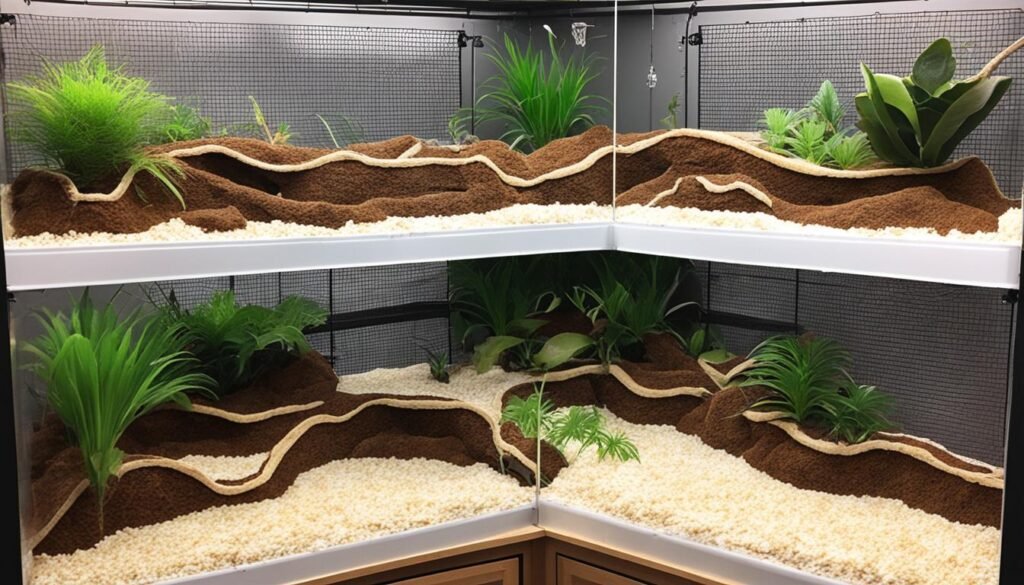
Drawing inspiration from these examples and recommendations, you can create an enclosure that meets the needs of your ball python while offering a comfortable and stimulating living space. When designing the perfect habitat, remember to consider the size of your snake, its natural behavior, and any specific requirements it may have.
Conclusion
In conclusion, selecting the best substrate for your ball python is crucial for health and well-being. You can ensure their habitat is comfortable and natural by considering safe options, maintenance requirements, and your snake’s specific needs.
Safety and hygiene should be prioritized when choosing the optimal bedding. Substrates such as newspaper, paper towels, commercial cage liners, recycled paper bedding, cypress mulch, orchid bark, bioactive substrates, and aspen shavings offer comfort and cleanliness for your snake.
Regular substrate maintenance is essential to prevent infections and other health issues. Cleaning and removing any contaminated substrate, such as feces, urates, shed skin or excess water, should be done regularly. The substrate replacement or spot cleaning frequency will depend on the substrate type used.
Making informed substrate choices and providing proper care can create an ideal environment for your ball python. Remember to prioritize their well-being and create a comfortable habitat miming their natural surroundings. Your snake will thank you for it!
FAQ
What is the importance of choosing the right substrate for a ball python?
The right substrate provides a comfortable and natural habitat, promoting the snake’s well-being and quality of life.
What are some good substrates for ball pythons?
Good substrates include newspaper, paper towels, commercial paper cage liners, recycled beddings, cypress mulch, orchid bark, bioactive substrates, and aspen shavings.
What substrates should be avoided for ball pythons?
Avoid using sand, cedar shavings, astroturf, and gravel, as these can harm the snake’s health, including respiratory problems or injuries.
Are there safe substrates for ball pythons?
Safe substrates include newspapers, paper towels, commercial cage liners, recycled paper beddings, cypress mulch, orchid bark, bioactive substrates, and aspen shavings.
How should the bedding for a ball python be maintained?
To prevent infections or illnesses, it is important to regularly clean and remove contaminated substrates such as feces, urates, shed skin, or excess water.
What are some personal experiences with ball python substrates?
Different owners have succeeded with substrates such as coconut fiber, cypress mulch, paper-based options, custom blends, or organic materials.
What factors should be considered when choosing the right substrate?
Factors to consider include humidity requirements, replication of the snake’s natural habitat, ease of cleaning, cost-effectiveness, availability, and personal preferences.
What is a bioactive setup, and how can it benefit a ball python?
A bioactive setup consists of soil, coconut husk, similar materials, and microorganisms. It creates a self-sustaining, natural environment that provides benefits such as waste breakdown, improved humidity control, and enrichment for the snake.
Where can I find inspiration and recommendations for ball python enclosures?
Various sources, including PVC enclosures with shredded paper or orchid bark, glass tanks with cypress mulch, or other setups, can provide inspiration and recommendations for creating an ideal habitat.
What is the importance of selecting the best substrate for a ball python?
Choosing the right substrate is crucial for the snake’s health and well-being. It creates a comfortable, natural habitat in which the snake can thrive.
Images Credit: All images are AI-generated.
Disclaimer: The images, videos & logos displayed on bestfordaily.com are used for informational purposes only. We make every effort to credit the original copyright holder whenever possible. If you are the owner of any content used on this blog and do not wish for it to appear here, please get in touch with us.
Author
-

Hey there! I'm Andrew Reed, and I live for the thrill of writing reviews. Dive into my world at bestfordaily.com, where I unpack stories behind products and experiences. I'm all about sharing my unique take on things, infusing each review with my youthful enthusiasm and a dash of social flair. Join me on this exciting journey—I promise you won't just read reviews; you'll experience them!
View all posts

